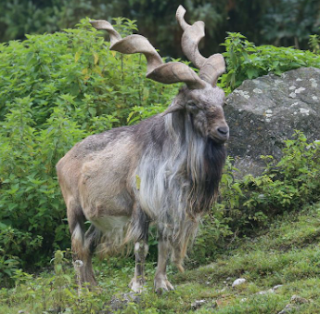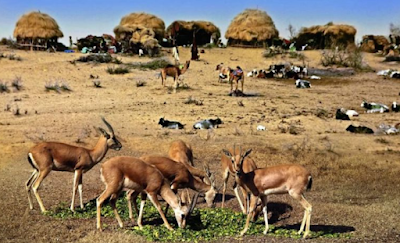Game reserves are areas of land that are set aside for the conservation of wildlife and for recreational activities such as game viewing, hunting, and photography. Unlike national parks, game reserves often allow hunting and other activities that are restricted in national parks. Game reserves can be public or private and are typically managed by wildlife conservation organizations, government agencies, or private landowners.
In some
countries, game reserves are an important part of wildlife conservation
efforts, as they provide a source of income for local communities and encourage
the sustainable use of natural resources. However, in other countries, game
reserves have been criticized for promoting unsustainable hunting practices and
contributing to the decline of wildlife populations.
Importance of Game reserves
Game reserves
are important for several reasons, including:
- Conservation of
wildlife:
Game reserves provide a safe and protected habitat for wildlife
species to live and breed. By limiting human activities in these areas, game
reserves help to reduce the impact of habitat destruction, poaching, and other
threats to wildlife populations.
- Preservation of
natural habitats:
Game reserves help to preserve natural habitats, such as forests,
grasslands, wetlands, and rivers that are essential for the survival of
wildlife species. By protecting these habitats, game reserves help to maintain
the biodiversity and ecological balance of the area.
- Tourism and
recreation:
Game reserves provide opportunities for tourism and recreation,
such as game viewing, hunting, and photography. These activities generate
income for local communities and support the conservation efforts of the
reserve.
- Education and
research:
Game reserves provide opportunities for education and research on
wildlife conservation and natural resource management. By promoting public
awareness of the importance of wildlife conservation and supporting scientific
research, game reserves help to advance knowledge and understanding of the natural
world.
- Sustainable use of natural resources:
Game reserves
promote the sustainable use of natural resources by regulating activities such
as hunting, fishing, and tourism. By setting limits on the number of animals
that can be hunted or the number of visitors that can enter the reserve, game
reserves help to ensure that natural resources are used in a way that does not
harm the environment or threaten wildlife populations.
Overall, game
reserves play an important role in protecting and conserving wildlife and their
habitats, promoting sustainable use of natural resources, generating income for
local communities, and advancing knowledge and understanding of the natural
world.
List of Game Reserves of Pakistan
|
|
|
|
|
|
|
|
|
|
|
|
|
|
|
|
|
|
|
|
|
|
|
|
|
|
|
|
|
|
|
|
|
|
|
|
|
|
|
|
|
|
|
|
|
|
|
|
|
|
|
|
|
|
|
|
|
|
|
|
|
|
Protection of Game Reserves
The protection
of game reserves is critical for the preservation of wildlife and their
habitats. Here are some key ways that game reserves are protected:
Legal Protection:
Game reserves are typically protected by national and/or local
laws and regulations that prohibit hunting, poaching, and other activities that
harm wildlife or their habitats. In Pakistan, the wildlife protection laws
include the Pakistan Wildlife (Protection, Preservation, Conservation and Management)
Ordinance, 1979 and the Pakistan Environmental Protection Act, 1997. These laws
provide legal protection to wildlife and their habitats and impose penalties
for violations.
Wildlife Conservation:
Wildlife conservation is a critical aspect of game reserve protection. Game reserves are managed to conserve and protect wildlife, including endangered species. This involves monitoring wildlife populations, restoring habitats, and reintroducing endangered species into the wild. For example, the Lal Suhanra National Park in Punjab, Pakistan, is home to a breeding program for the endangered Indus River dolphin.
Community Involvement:
Local communities play a crucial role in the protection of game
reserves. They are often involved in the management of the reserves and can
provide valuable information on wildlife populations and the state of the
habitats. They may also be employed in ecotourism activities or as park
rangers. Involving local communities in the management of game reserves can
also help to reduce conflict between humans and wildlife.
Ecotourism:
Many game reserves rely on ecotourism as a source of revenue and to promote conservation efforts. Ecotourism activities such as guided tours, wildlife watching, and camping can provide economic benefits to local communities while also promoting conservation efforts. Ecotourism also raises awareness about the importance of protecting wildlife and their habitats.
Law Enforcement:
Effective law enforcement is essential for protecting game
reserves from illegal activities such as poaching, hunting, and habitat
destruction. Park rangers and other law enforcement officials play a critical
role in protecting game reserves by patrolling the reserves, monitoring
wildlife populations, and enforcing wildlife protection laws. In Pakistan, the
wildlife protection department and forest department are responsible for law
enforcement in game reserves.
Overall, the
protection of game reserves requires a comprehensive approach that involves
legal protection, wildlife conservation, community involvement, law
enforcement, and ecotourism. By working together, we can ensure that game
reserves and their wildlife are protected for future generations.












